Mad Hedge Biotech & Healthcare Letter
March 18, 2021
Fiat Lux
FEATURED TRADE:
(A BLUE CHIP STOCK SELLING AT A DISCOUNT)
(LLY), (GILD), (REGN), (SNY), (AMGN), (TEVA), (NVO), (ABBV), (BMY)
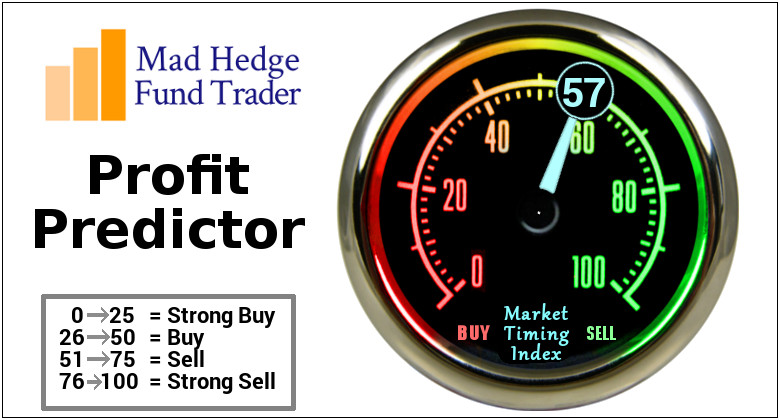
Mad Hedge Biotech & Healthcare Letter
March 18, 2021
Fiat Lux
FEATURED TRADE:
(A BLUE CHIP STOCK SELLING AT A DISCOUNT)
(LLY), (GILD), (REGN), (SNY), (AMGN), (TEVA), (NVO), (ABBV), (BMY)

It’s not unheard of in the biotechnology industry to watch the stock prices of small or even mid-cap drug developers rise and fall by 30% following trial results or new drug approval.
However, when the company is Eli Lilly (LLY), which holds a $179 billion market capitalization, then biotech investors need to pay attention.
After all, the only plausible conclusion to draw from this is that there have been some seismic advancements done by the company.
Two potentially breakthrough treatments are the culprit behind the volatility in Eli Lilly stock these days.
The first is Eli Lilly’s COVID-19 program, in which the company is looking into using Bamlanivimab (LY-CoV555) solo or combining it with Etesevimab (LY-CoV016).
What we know so far is that the combo drug can lower the risk of death and hospitalization among high-risk COVID-19 patients by as high as 87%.
In November 2020, the FDA granted Eli Lilly’s Bamlanivimab Emergency Use Authorization.
The solo treatment was also authorized for the same usage in Morocco, Europe, Canada, Rwanda, and some regions of the Middle East, where Eli Lilly is collaborating with the Bill and Melinda Gates Foundation for distribution.
Last February 2021, its combo treatment received the same approval.
To date, Eli Lilly has shipped roughly 1 million doses of Bamlanivimab and is committed to supplying an additional 1 million this quarter.
To meet the demand for the Bamlanivimab-Etesevimab combo, Eli Lilly will be working with pharmaceutical titan Amgen (AMGN).
In the company’s 2020 earnings report, Eli Lilly disclosed that Bamlanivimab accounted for $871 million of their sales.
For 2021, the market for COVID-19 treatments is valued at $27.25 billion.
Taking into consideration the competitors coming up with similar medications, such as Gilead Sciences (GILD), Regeneron (REGN), and Sanofi (SNY), the conservative estimate for the sales for Bamlanivimab alone is estimated to reach roughly $1 billion to $2 billion this year.
The second potential breakthrough that’s affecting Eli Lilly’s prices is its Alzheimer’s disease treatment, Donanemab.
Eli Lilly recently released positive data from the Phase 2 trial of Donanemab, with the treatment slowing down cognitive decline by 32% after 76 weeks.
In fact, a notable decline was already observed among the patients as early as 36 weeks.
This is an impressive result, and there’s talk that Eli Lilly’s plan of possible commercialization of Donanemab by 2024 could be fast-tracked to as early as the first half of 2023.
Interestingly, the positive news was met with negative reactions by the investors.
Eli Lilly fell by 9% following the Donanemab update, sending shares tumbling from $208.18 to $189.16.
This reaction effectively erased almost $20 billion in the company’s market value.
The negative reaction to Eli Lilly’s news may be stemming from the pending application of Biogen’s (BIIB) own Alzheimer’s drug, Aducanumab, which is expected to receive word from the FDA by June.
Investors anticipate that Aducanumab’s performance would be indicative of Donanemab’s future.
Looking at the trial results though, I can say that this shouldn’t be the case. Since the beginning, Donanemab has outperformed Aducanumab in practically every aspect.
Either way, what cannot be denied here is the market opportunity.
When the market thought that Aducanumab would get FDA approval in November 2020, the share price of Biogen saw a whopping 44% jump from $246 to $354 overnight.
Meanwhile, Donanemab’s potential sales volumes have been estimated to reach over $10 billion annually.
Other than Donanemab, Eli Lilly has been developing more contenders to boost its neuroscience division. Right now, this segment generates 6.3% of the company’s total revenues.
One of the promising drugs in the portfolio is migraine treatment Emgality, which recorded a 123% increase in sales last year to hit $362 million.
Thus far, Emgality holds at least 31% of the migraine market and still has room for growth and expansion.
This is a remarkable performance considering that its competitors include Amgen’s Aimovig and Teva’s (TEVA) Ajovy.
Another solid earner is antidepressant treatment Cymbalta, which generated over $768 million in sales last year, up by 5% year-on-year.
Outside its neuroscience efforts, one of Eli Lilly’s strongest growth drivers is its diabetes franchise.
This segment accounts for roughly 47% of its revenues and is led by Trulicity with $5 billion in sales last year, up 23% year-over-year.
Eli Lilly’s diabetes program has grown so much in the past years that it now aggressively competes against Novo Nordisk (NVO), a monopoly-like presence in this space.
In fact, Trulicity has been able to successfully protect its own market share against Novo’s heavily marketed Rybelsus, with data showing that users of Eli Lilly’s diabetes injectable recorded 60% adherence levels compared to Novo’s 43%.
In terms of expansion, Eli Lilly also won a new approval for Trulicity to be used to treat cardiovascular conditions as well.
This additional indication puts Trulicity’s peak sales at roughly $7.43 billion.
In an effort to corner the diabetes market, Eli Lilly also developed Tirzepatide.
Basically, this treatment is a long-term hedge against the pending loss of Trulicity’s patent exclusivity by 2027.
However, Tirzepatide is projected to surpass its predecessor in sales and reach double-digit billions.
Overall, Eli Lilly has positioned itself well in the diabetes market.
While it’s engaged in an aggressive battle for dominance against Novo Nordisk, there’s a lot of room for both.
The diabetes treatment segment is a continuously expanding market, with its value doubling in size from 2015 to 2015. Within this period, this market is projected to grow from $31 billion to $59 billion.
Aside from its diabetes and neuroscience programs, Eli Lilly has also been active in developing its immunology and oncology segments.
This is an ambitious plan, considering that practically all pharmaceutical companies are working on treatments in this space.
After all, the auto-immune market is massive as it’s worth well over $50 billion.
One of the bestsellers in Eli Lilly’s portfolio is plaque psoriasis treatment Taltz, which grew its sales by 31% year-over-year to reach $1.8 billion last year.
Some of the major competitors in this space are Bristol Myers Squibb (BMY) with Zeposia, Sanofi’s Dupixent, and AbbVie’s (ABBV) Skyrizi.
What could be promising news for Eli Lilly is the fact that AbbVie’s ultra-bestseller Humira is going off-patent by 2023.
This means that it could open up the market to allow both Taltz and Olumiant, another top-selling Eli Lilly treatment, to grab part of the lucrative market share.
Ultimately, Eli Lilly is a business that offers a promising commercialized portfolio and a remarkable near-term pipeline, which can reasonably support an annual revenue growth rate of roughly 10% even if we don’t factor in the effects of Donanemab.
Apart from the potential aftermath of the pending Biogen news, the fall in Eli Lilly’s shares could also be attributed to the extremely high expectation of investors.
Alzheimer’s has no approved cure, and there are only a handful of treatments developed from this neurological disease—none of which are even marginally effective.
It’s normal for investors to be wary of positive data results since they’ve been down this road before and are merely attempting to temper their excitement.
Amid the selloff, I believe that Donanemab is far from a lost cause. More importantly, I think the drop in Eli Lilly’s share price presents a rare buying opportunity for investors.
Therefore, I advise buying the dip.
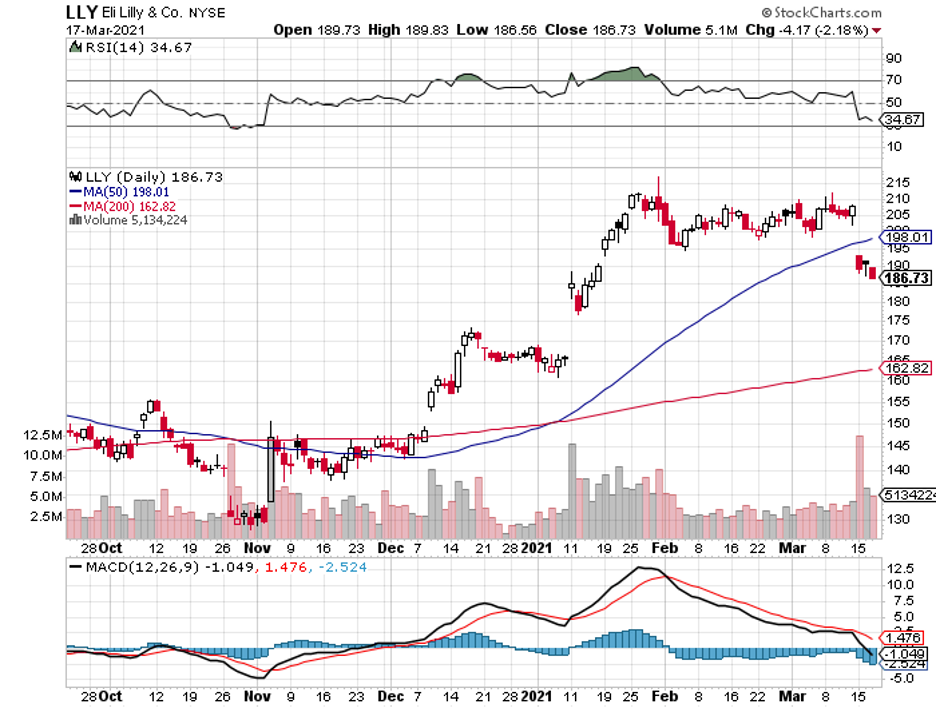
Mad Hedge Biotech & Healthcare Letter
January 14, 2020
Fiat Lux
Featured Trade:
(CALIFORNIA JUMPS INTO THE DRUG BUSINESS)
(MYL), (TEVA), (RHHBY)
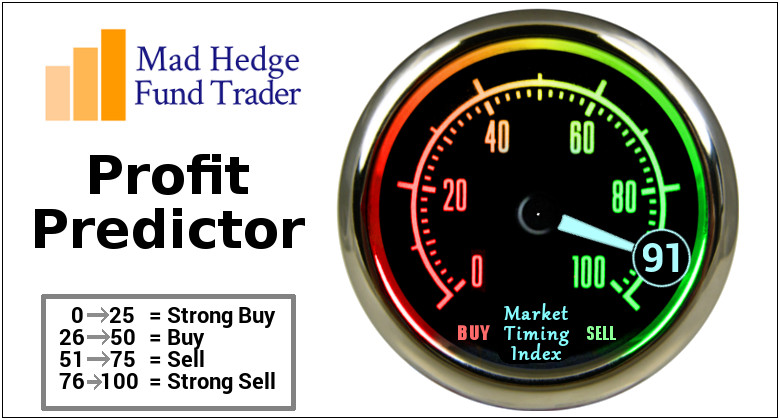
The bio-pharmaceutical industry, including the biotechnology sector, is in for another shock.
Taking a page off Elizabeth Warren’s book, California Governor Gavin Newson announced his plan to create the first-ever state-run prescription drug label in the country.
This move would be an ideal way to leverage the size and power of the California population in terms of negotiating advantageous pricing with generic drug manufacturers.
Wielding California’s massive purchasing power courtesy of the 40 million residents, almost 33% of which are enrolled in Medicaid or Medicare, Newsom believes that the government can get generic drugs for substantially lower prices from the manufacturers. This idea is part of Newsom’s broader vision to lower the healthcare costs in California.
In effect, the Golden State is stepping in where the federal government has failed to act. Washington should have used their massive purchasing power as a cudgel to lower prices decades ago. We’ve seen a half-century of talk, but no action.
Research from the Kaiser Family Foundation shows that 6 out of 10 Americans take a prescription, with 79% of them complaining about the unreasonable costs of these drugs.
As a result of these prohibitive prices, 3 in 10 Americans no longer take their prescribed medications adding hugely to the nation’s health care bill.
Even governments find it challenging to keep up with the costs of healthcare, with California’s Medicaid program for the less fortunate, otherwise known as Medi-Cal, reached over $100 billion annually in state and federal spending alone.
Inevitably, the skyrocketing prices pushed people to look at generic medications as more reasonable alternatives to brand name medications.
However, Newsom’s announcement wasn’t met with an overwhelmingly positive response from the generics sector either.
In fact, the Association for Accessible Medicines, the advocacy organization for generic drug manufacturers, only sent out a polite message regarding Newson’s announcement.
The group said that they "look forward to working with California to help expand access to safe, affordable and effective generic and biosimilar medicines, but let's make our decisions and policies based on the best data and science available." You couldn’t get any more anodyne.
Despite their lukewarm response to this plan, two major players in the generic pharmaceutical industry have already been identified as the front runners for this shift to generics movement: Mylan (MYL) and Teva Pharmaceutical Industries (TEVA).
To say that 2019 was an awful one for Mylan is an understatement. The generic drugmaker faced a slew of issues including declining sales in their North American market, endless legal battles, and even exclusivity loss for its top-selling impotence treatment Tadalafil (Cialis).
However, Mylan moved to turn things around in July 2019 when it entered a merger agreement with Pfizer’s (PFE) generic unit Upjohn. The two companies will turn into one entity, called Viatris, and will be launched by mid-2020.
According to the terms of this deal, Viatris will be handling the off-patent but lucrative branded drugs of Pfizer such as cholesterol treatment Lipitor, pain medication Celebrex, and erectile dysfunction and the blue erectile dysfunction drug Viagra.
This agreement aims to inject more money into Mylan’s research and development team for them to create more complex generics and biosimilars.
At the same time, the new company will already have a “ready-made” tried and tested drug portfolio courtesy of Pfizer’s off-patent previous blockbusters.
Apart from the Pfizer’s lineup, Mylan also has a number of key products to contribute to Viatris.
One is a biosimilar of Roche’s (RHHBY) blockbuster breast cancer drug Herceptin (it added four years to the life of my first wife). The launches of promising products, like biosimilar versions of Teva’s multiple sclerosis injection Copaxone and GlaxoSmithKline’s (GSK) asthma medication Advair, are also positive indicators of growth.
With these decisions, Mylan is expected to have a brighter 2020.
Another generic drug maker that’s expected to make a comeback in 2020 is Teva.
In 2019, everything that could possibly go wrong went wrong for this company. As a refresher, here’s what it had to endure: executive leadership turnover, bribery allegations, generic competition for its top-selling drug Copaxone, and of course, the opioid lawsuits from 44 states.
Needless to say, Teva’s profit estimates tumbled and its dividend was shelved. Worst, its debt load has been a huge warning sign that repelled investors left and right.
However, Teva has managed to turn things around.
The opioid lawsuits are reaching a reasonable settlement and the company now has a stronger leadership team. More importantly, it has been successful in cutting down its expenditures. If things go smoothly, Teva is expected to save $3 billion in yearly expenses to improve its profit margins in 2020.
On top of these, Teva has regained its footing in the generic drug market via the steady climb in terms of sales of its newer branded treatments, Ajovy and Austedo.
All in all, the stage is set for Teva to make its comeback and patient investors should expect to be richer in 2020.
Since both generic drug makers churned out less than stellar numbers in 2019, the stocks are likely undervalued at the moment. Hence, it’s important to take advantage of this and buy before these regain momentum and the prices skyrocket once again.
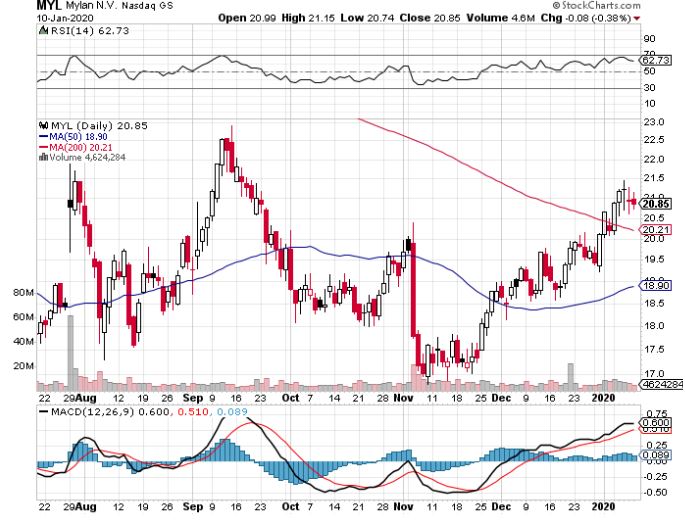

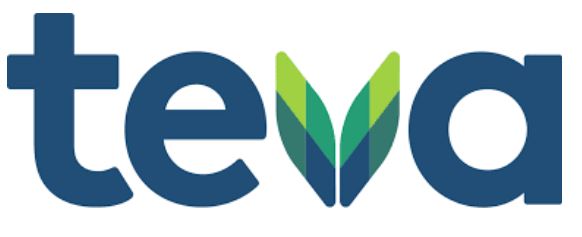
Legal Disclaimer
There is a very high degree of risk involved in trading. Past results are not indicative of future returns. MadHedgeFundTrader.com and all individuals affiliated with this site assume no responsibilities for your trading and investment results. The indicators, strategies, columns, articles and all other features are for educational purposes only and should not be construed as investment advice. Information for futures trading observations are obtained from sources believed to be reliable, but we do not warrant its completeness or accuracy, or warrant any results from the use of the information. Your use of the trading observations is entirely at your own risk and it is your sole responsibility to evaluate the accuracy, completeness and usefulness of the information. You must assess the risk of any trade with your broker and make your own independent decisions regarding any securities mentioned herein. Affiliates of MadHedgeFundTrader.com may have a position or effect transactions in the securities described herein (or options thereon) and/or otherwise employ trading strategies that may be consistent or inconsistent with the provided strategies.
This site uses cookies. By continuing to browse the site, you are agreeing to our use of cookies.
OKLearn moreWe may request cookies to be set on your device. We use cookies to let us know when you visit our websites, how you interact with us, to enrich your user experience, and to customize your relationship with our website.
Click on the different category headings to find out more. You can also change some of your preferences. Note that blocking some types of cookies may impact your experience on our websites and the services we are able to offer.
These cookies are strictly necessary to provide you with services available through our website and to use some of its features.
Because these cookies are strictly necessary to deliver the website, refuseing them will have impact how our site functions. You always can block or delete cookies by changing your browser settings and force blocking all cookies on this website. But this will always prompt you to accept/refuse cookies when revisiting our site.
We fully respect if you want to refuse cookies but to avoid asking you again and again kindly allow us to store a cookie for that. You are free to opt out any time or opt in for other cookies to get a better experience. If you refuse cookies we will remove all set cookies in our domain.
We provide you with a list of stored cookies on your computer in our domain so you can check what we stored. Due to security reasons we are not able to show or modify cookies from other domains. You can check these in your browser security settings.
These cookies collect information that is used either in aggregate form to help us understand how our website is being used or how effective our marketing campaigns are, or to help us customize our website and application for you in order to enhance your experience.
If you do not want that we track your visist to our site you can disable tracking in your browser here:
We also use different external services like Google Webfonts, Google Maps, and external Video providers. Since these providers may collect personal data like your IP address we allow you to block them here. Please be aware that this might heavily reduce the functionality and appearance of our site. Changes will take effect once you reload the page.
Google Webfont Settings:
Google Map Settings:
Vimeo and Youtube video embeds:
